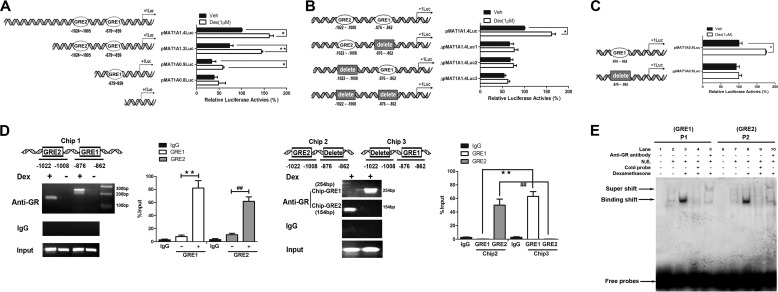FIGURE 2.
Functional characterization of the GRE in the MAT1A promoter. HepG2 cells were transfected with pMAT1A-1.4 Luc, pMAT1A-1.2 Luc, pMAT1A-0.9 Luc, and pMAT1A-0.8 Luc for 24 h, followed by treatment with Dex for another 24 h. *, p < 0.05 and **, p < 0.01. A–C, effects of truncation, site-directed mutation, and deletion mutation in the GRE sequence on the MAT1A promoter activity were analyzed. D, role of Dex in the binding of the GR to the GREs of the MAT1A promoter was determined by ChIP assays. The productions of Chip-GRE1 and Chip-GRE2 were quantified by qPCR. **, p < 0.01, and ##, p < 0.01. E, analyses of the effect of Dex on the binding of the GR to GRE1 (P1) and GRE2 (P2) in the MAT1A promoter by EMSA. Productions of Chip-GRE1 and Chip-GRE2 were quantified by quantitative PCR. Shown is a representative result from three independent experiments. Veh, vehicle.

